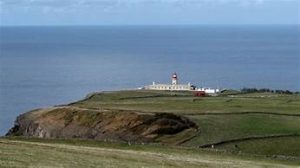Azores High:

A study revealed that an extremely large ‘Azores High’ (a subtropical weather phenomenon) has resulted in abnormally dry conditions across the western Mediterranean, including the Iberian Peninsula, primarily occupied by Spain and Portugal.
- Azores High is a subtropical high pressure system that extends over the eastern subtropical North Atlantic and western Europe during winter.
- It is associated with anticyclonic winds in the subtropical North Atlantic.
- It is formed by dry air aloft descending the subtropics and coincides with the downward branch of the Hadley Circulation.
- Hadley Cells are the low-latitude overturning circulations that have air rising at the equator and air sinking at roughly 30° latitude.
- They are responsible for the trade winds in the Tropics and control low-latitude weather patterns.
- Hadley cells could extend all the way to the poles.
Effects of Azores High:
- An annual drying of 5-10 millimetres per year per decade has been recorded in the Iberian Peninsula throughout the second half of the 20th century.
- A further 10-20% drop in winter precipitation is expected by the end of the 21st century.
- These projected changes make agriculture of the Iberian region some of the most vulnerable in Europe.
- The study projected:
- Olive-growing regions in southern Spain will suffer a 30% decline in production by 2100
- Cultivation area in grape-growing regions across the Iberian Peninsula will shrink 25% – 99% by 2050 due to severe water deficits that will render land unsuitable for viticulture.
- The Azores High expansion is driven by external climate forces and that the only external forcing that produces this signal in the industrial era is atmospheric greenhouse gas concentrations.
- Azores High expansion emerged after 1850 and strengthened in the twentieth century, consistent with anthropogenically driven warming.
- The researchers explored the changing atmospheric conditions since the onset of the industrial era that contributed to these regional hydroclimatic changes by assessing how the characteristics of the Azores High varied over the past 1,200 years.




